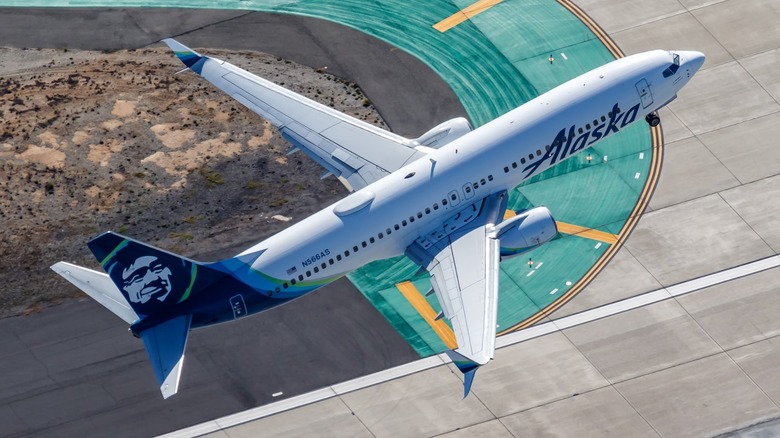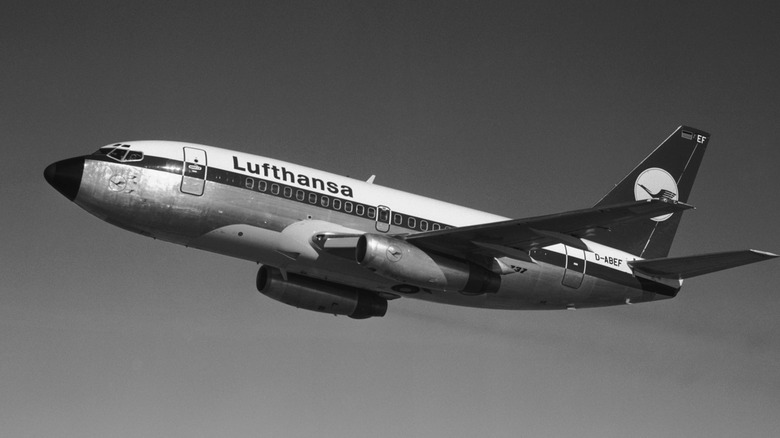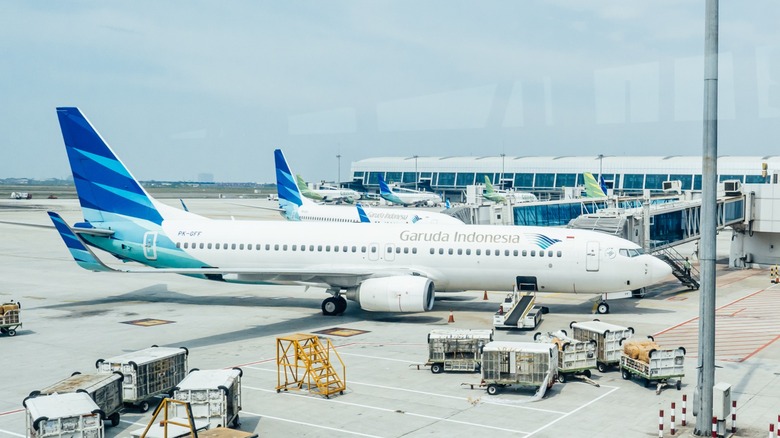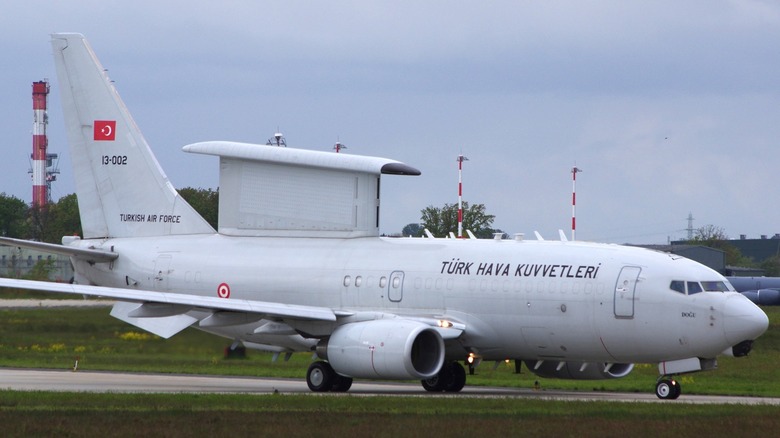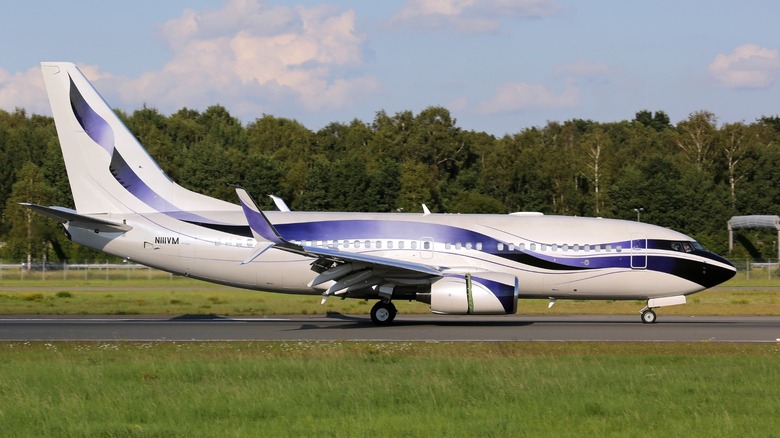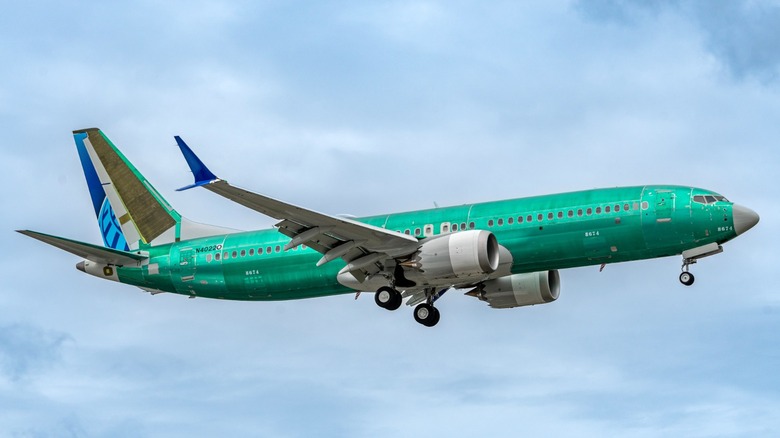Everything You Need To Know About The Boeing 737NG Family
The Boeing 737 is one of the most popular airliners in the world, with Boeing delivering over 11,000 units of this single aisle twin since it first opened its order books in 1955. The 737 has had many variants and generations through the years, with the latest MAX generation launched in 2011, and first flying in 2016.
However, the third-generation 737, also known as the 737 New Generation (NG), is the most popular generation of this passenger jet, with almost 7,000 units delivered to various customers. The majority of this number is the 737-800, with over 5,000 airliners delivered to various operators. The 737-700 stands at a distant second, with just over 1,100 examples transferred to customers.
Aside from its passenger duties, the 737NG also served in other official capacities that most would not expect. So, what made the 737NG a winner for Boeing? And who is the largest operator of this aircraft generation?
The third generation of the venerable Boeing 737
The 737NG was probably Boeing's reply to the Airbus A320 that was first delivered to Air France in 1988. According to former Airbus COO-Customers John Leahy, in an interview with Leeham News and Analysis, "We were probably responsible for the [Boeing] 737 NG because a lot of people thought the 737 Classic could outsell the A320." Leahy adds, "At least the guys in Seattle thought that. But when the dyed-in-the-wool, 100% Boeing customer United switched over to the A320, that's when they panicked and decided they needed to update the 737."
The first NG variant — the 737-800 — made its first flight in 1997, with the first delivery made in 1998 to German leisure airline Hapag-Lloyd Flug. The 737NG received upgraded engines with better fuel efficiency than the Classics, moving over from the CFM56-3 to the CFM56-7 series engine. It also received a new wing design, which allowed the plane to carry more fuel and fly longer distances.
The 737-800 could seat 189 passengers and fly 2,970 nautical miles (or 5,520 km) in one hop. While this isn't the longest range or the largest capacity passenger jet, many airlines found that this is the sweet spot for their domestic and regional flights, making the -800 the most popular 737 variant. Nevertheless, Boeing made other variants of the NG to cater to the demands of other customers.
Four main variants
The 737-800 was the first development in the NG family, but Boeing also made three other variants. The 737-600 is the smallest version, with a seating capacity of just 130 passengers. However, it has the longest range in the NG family at 3,235 nautical miles (5,991 km). The 737-700 is slightly longer than the -600 variant, but is still smaller than the -800 with just 148 seats and a 3,010 nautical miles (5,574 km) of range. The largest and longest 737NG is the 737-900ER variant capable of seating 215, and can fly up to 2,950 nautical miles (5,463 km).
Aside from these four main variants, Boeing also produced several other subvariants, including a cargo version (-700C), an extended range variant (-900ER), and variants with winglets (-700, -800, -900, and -900ER). All in all, Boeing sold nearly 7,000 examples across all of these variants.
Southwest is the 737NG's most loyal customer, having taken delivery of over 560 airliners. But Ryanair is a close second, with over 530 examples. You might not be familiar with the third-largest operator of the 737NG, as it's NAS Aviation Services, LLC — an aircraft leasing company. Finally, the fourth and fifth largest operators of the type is United and American — each with 325 and 305 jets, respectively.
737s in military service
Aside from airline duties, the 737NG family also served in the military. The U.S. Navy and U.S. Marine Corps have acquired a couple of Boeing 737-700C and converted them for airlift missions. This variant is called the C-40 Clipper, and is essentially a cargo plane converted for mixed passenger and cargo use.
Aside from these, the two other military variants of the 737NG have a little bit more exciting roles. Boeing E-7 Wedgetail Airborne Early Warning & Control (AEW&C) is based on the 737-700, but features a large Multi-role Electronically Scanned Array (MESA) radar on its back. It can detect identify targets from as far as 300 nautical miles (555 km) out, and has a maximum range of 3,500 nautical miles (6,482 km). It's also capable of in-flight refueling, greatly extending its operational range and loiter time.
The P-8 Poseidon Maritime Patrol Aircraft is another 737NG derivative. This version of the 737 has several features, including anti-submarine and anti-surface warfare capabilities, surveillance and reconnaissance, and search-and-rescue missions. This is the successor to the legendary P-3 Orion, which the U.S. used for over 50 years.
The 737 as a private jet
The Boeing 737 family is the smallest jet that Boeing produced, aside from the Boeing 717 (which was essentially a rebadged MD-95). Because of this, it made sense for Boeing to market it to corporations and private individuals as a private jet. So, the 737 NG was the first of the 737 family to be fully marketed as the Boeing Business Jet.
The third generation 737s came in three business jet configurations — the first one offered was the BBJ1, which combined the fuselage of the -700 with the wings and landing from the larger -800. Boeing eventually offered the larger BBJ2 and BBJ3 models, which were based on the -800 and -900ER, respectively.
Boeing sold 152 copies of these aircraft to private buyers, and while they're not the most expensive private jets on the market, they're still pretty pricey — costing at least $71 million when they were new. So, even if Boeing primarily makes airliners and military aircraft, they're also one of the best private jet manufacturers globally.
A tumultuous replacement with the 737 MAX
Although the 737 was a pretty successful design, it was getting old by 2011, as it had made its first flight in 1967. However, when Airbus launched the A320neo, Boeing didn't want to spend the years required to build an all-new model to compete against it. So, instead, it launched the Boeing 737 MAX series.
The 737 MAX family looked promising on paper. However, less than three years after its first flight, the 737 MAX 8 has had two lethal crashes related to a faulty safety system. More recently, Boeing again came into scrutiny after the door plug on a Boeing 737 MAX 9 blew off midflight. While Boeing has fixed the MCAS issue, with the FAA clearing the MAX 8 to return to the skies, the newer problems that recently came to light reflect poorly on the company's safety culture. This is a major disappointment, especially as this was the same company that built the highly successful and incredibly safe 737 NG, which only had a hull loss of 0.18 per million flights.
This is a low number, especially when compared with the first-generation 737s, which had 1.78 hull losses per one million departures — and the 737 MAX series, which had 1.48 hull losses per one million flights. Nevertheless, some pilots still believe in Boeing, especially as the changes to the company's senior leadership are expected to turn things around.
